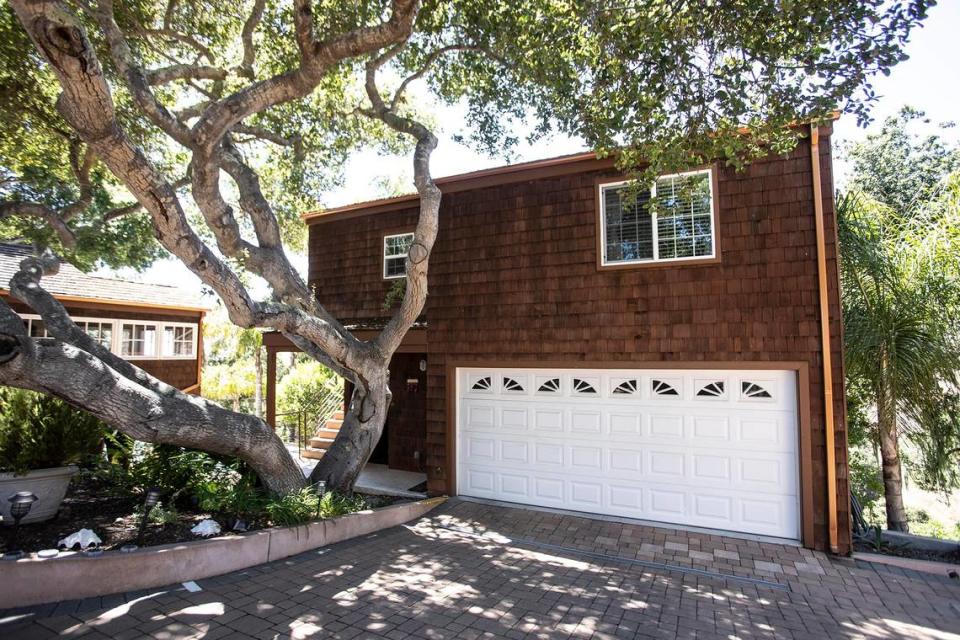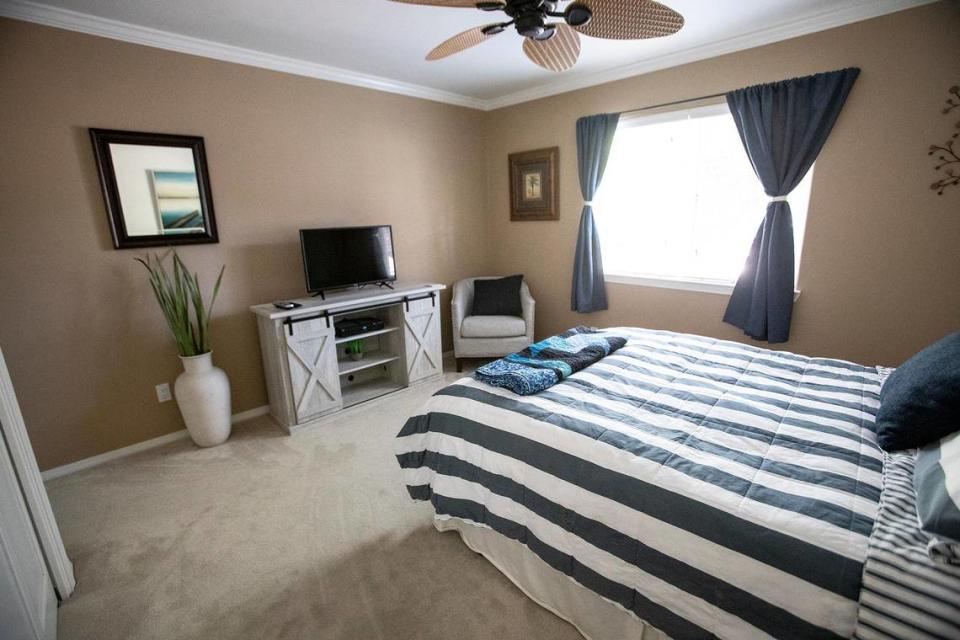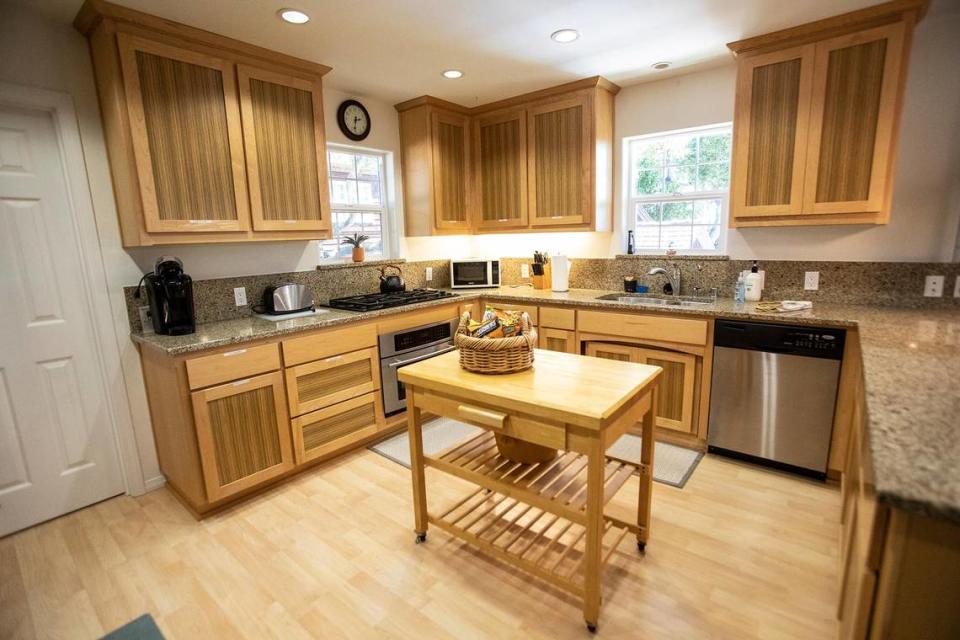It’s the height of SLO County tourist season. Why have Pismo Beach Airbnb listings dropped?
Former Pismo Beach Mayor Shelly Higginbotham has owned and operated a short-term vacation rental in her Pismo Beach neighborhood since 2019.
It’s an endeavor that’s become more “onerous” and difficult these days, she said.
In recent years, the city of Pismo Beach has attempted to rein in its short-term rentals in an effort to preserve long-term rental properties for residents and keep neighborhood disruptions to a minimum, Higginbotham told The Tribune.
Since June 21, 2022, Pismo Beach has enforced a moratorium on short-term rentals that caps the number of permits for such properties at 28. The city extended the moratorium in August 2022 and again in June; it’s now in place through June 2024.
That regulation has made renting a Pismo Beach property via Airbnb or a similar website significantly more difficult — and put pressure on the city to enforce it, Higginbotham said.
Higginbotham said the city has not been able to enforce the permit process consistently.
“I just don’t know if that’s manageable to try to reel them all in,” Higginbotham said.

How do Pismo Beach regulations impact vacation rental owners?
While it was initially easy to run a short-term rental in Pismo Beach, increased requirements imposed by the city have made it more difficult, Higginbotham said.
These requirements include showing proof of residency; installing fire extinguishers, carbon monoxide detectors and fire alarms; displaying escape routes, paying permit renewal fees and, most importantly, high taxes specific to the short-term rental business, she said.
Pismo Beach’s transient occupancy tax rate — a tax that vacation rental hosts in California are required to charge their guests — increased from 10% to 11% of the owner’s gross income in 2021 , Higginbotham said.
Airbnb automatically collects and pays these taxes on behalf of its hosts whenever guests book in areas that charge transient occupancy taxes, the company said.
The Pismo Beach Lodging Business Improvement District takes 2% of the owner’s gross income, and the San Luis Obispo County Tourism Marketing District Assessment collects 1.5% of the gross rent, according to the city’s Lodging Businesses website.
Airbnb takes 3% of each rental transaction as a service fee, though some hosts must pay more, Higginbotham said.
That means hosts are seeing lower profits from their rentals now than they have in recent years, she said.

Has regulation of short-term rentals been effective?
Like many San Luis Obispo County cities, Pismo Beach’s short-term rental market shrank year-over-year in 2023, starting July with 308 short-term rentals listed on Airbnb or Vrbo, though some vacation rentals may have been included in this total, according to short-term rental market tracker AirDNA.
AirDNA tracks the number and location of active listings on Airbnb and Vrbo, and aggregates data on average daily rate, the percentage of short-term rentals operating full-time — more than 181 days a year — and occupancy rate.
However, despite having one of the county’s highest average daily rates at $424 a night, Pismo Beach lost 57 short-term rentals between July 2022 and this year — more than any other city in San Luis Obispo County.
Pismo Beach also has the lowest percentage of full-time short-term rentals in the county, with 52% of listings operating full-time.
While the number of short-term rentals have declined in the past year, Pismo Beach City Council member Marcia Guthrie said, such rentals are still exacerbating a long-term rental shortage in the city.
Pismo Beach’s issues with short-term rentals only really started when the widespread adoption of Airbnb and Vrbo expanded the reach of short-term rentals into the inland residential areas of the city, Guthrie said, taking long-term rental units off the market.
Vacation rentals and short-term rentals were traditionally a fixture of the more tourism-heavy coastal zone, she explained.
The City Council started regulating short-term rentals about five years ago, but the California Coastal Commission — which has final say over how coastal areas are developed — strongly supported introducing low-cost rentals for the visiting public, Guthrie said.
The Coastal Commission has since softened its stance in light of a growing shortage of long-term housing, allowing for more regulation of short-term rentals in coastal zones, Guthrie said.
In the meantime, the city is struggling with how to enforce its existing regulations.

“Many people are buying second homes, and then thinking, ‘I can turn this into a short-term rental to recoup some money,’ ” Higginbotham said, but those property owners have difficulty managing their properties from afar. “So you get these abuses.”
Because Pismo Beach doesn’t have the resources to enforce the terms of its permits on the handful of bad actors that have permits, and must rely on neighborhood reporting to uphold the moratorium, many unpermitted short-term rentals can slip through the cracks, Guthrie said.
Guthrie said she hopes the City Council and staff will find an enforceable way to regulate short-term rentals.
“I’m hoping that the new research staff has done will provide us with an option to be able to enforce the rules that we have in place, because we can’t now,” Guthrie said.
SLO County short-term rental market shrinks
Like many San Luis Obispo County cities, Pismo Beach’s short-term rental market shrank year-over-year in 2023, starting July with 308 short-term rentals listed on Airbnb or Vrbo, according to short-term rental market tracker AirDNA.
AirDNA tracks the number and location of active listings on Airbnb and Vrbo, and aggregates data on average daily rate, the percentage of short-term rentals operating full-time — more than 181 days a year — and occupancy rate.
However, despite having one of the county’s highest average daily rates at $424 a night, Pismo Beach lost 57 short-term rentals between July 2022 and 2023 — more than any city in San Luis Obispo County.
Pismo Beach also sported the lowest percentage of full-time short-term rentals in the county, with 52% of listings operating full-time.
Pismo Beach wasn’t the only city to see a decline in its short-term rental market.
According to AirDNA’s 2023 short-term rental mid-year outlook, overall revenue from short-term rentals is down across the nation.
Despite a projected 2.1% increase in average daily rate, revenue per available rental is likely to end the year 1.1% lower year-over-year, the AirDNA analysis found.
According to AirDNA’s outlook, the “explosion” of pent-up demand in 2021 produced “once-in-a-lifetime” performance gains, setting a high bar for the short-term rental market in 2022 and 2023.
Occupancy rates were 5.3% lower in 2022 than 2023, and the remainder of this year will likely see more, albeit milder, declines in occupancy, AirDNA found.
Meanwhile, as of July 7, there were 3,735 unique active listings on Airbnb and Vrbo in San Luis Obispo County, according to AirDNA.
AirDNA tracks the number and location of active listings on Airbnb and Vrbo, and aggregates data on average daily rate, the percentage of short-term rentals operating full-time — more than 181 days a year — and occupancy rate.
San Luis Obispo County lost nearly 200 short-term rentals between early July 2022 — considered the start of peak summer tourism season — and the same time this year, according to AirDNA, declining nearly 5% from 3,927 total rentals to 3,735.
The city of San Luis Obispo saw active listings decline from 426 at the start of summer 2022 to 378 as of July 7. Roughly 52% of the units operated as full-time short-term rentals, and were available for an average daily rate of $320.

Morro Bay, another tourist hot spot, saw active listings drop from 341 last year to 298 at the start of July, with an average daily rate of $344.
In the county’s largest short-term rental market, declines were far more moderate by comparison. Paso Robles’ short-term rental market shrunk only slightly from 879 in 2022 to 870 at the start of July.
Units in Paso Robles averaged a daily rate of $360, and 66% operated as short-term rentals full-time.
Closer to Pismo Beach, with the exception of Avila Beach, short-term rental markets in South County generally declined in that same time.
Avila Beach saw active listings jump from 178 to 192 between 2022 and this year, and sported South County’s highest average daily rate at $484 per night.
Around 60% of Avila Beach’s listings operated as short-term rentals full-time, AirDNA found.
City Council discusses short-term rental regulation
At its July 19 meeting, the Pismo Beach City Council again discussed the future of short-term rentals.
Previously, at its May 2 meeting, the council directed Pismo Beach staff to look into implementing several means of limiting short-term rentals, including a numerical or proximity-based cap, prohibiting short-term rentals outside of the Coastal Zone, increasing notifications to adjacent properties and coordinating with Airbnb to make enforcement easier.
Community development director Matt Downing said these options will need the approval of the California Coastal Commission, which may has not previously supported regulation of short-term rentals within the Coastal Zone.
Because of the potential “greed and confusion” that could come with reconciling Pismo Beach and the Coastal Commission’s zoning codes, Downing said one potential solution could be prohibiting short-term rentals from operating in Pismo Beach altogether.
“The Coastal Commission hasn’t been supportive of that, but looking at other cities and how the arguments have been constructed, we do believe that we would have to take a nuanced approach and basically make the argument that, with our almost 3,000 overnight accommodations that we have in the city, that is ample to support the visitors enjoying Pismo Beach,” Downing said.
After receiving the council’s direction, city staff will continue working on the next version of the city’s ordinance, Downing said.

